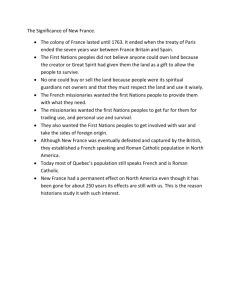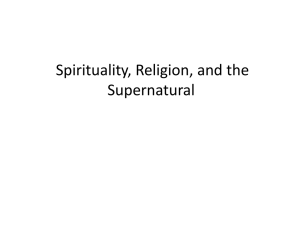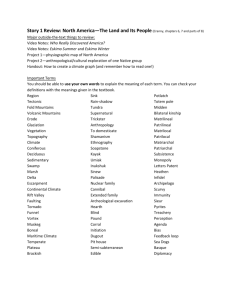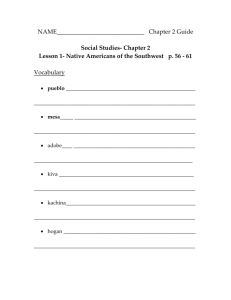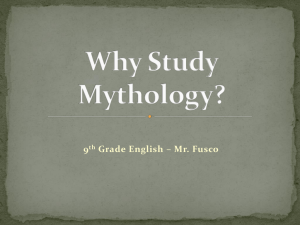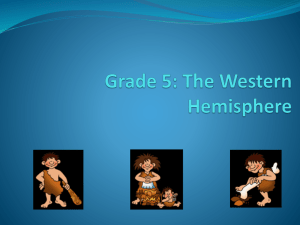Lesson 1: In-Class Notes
advertisement
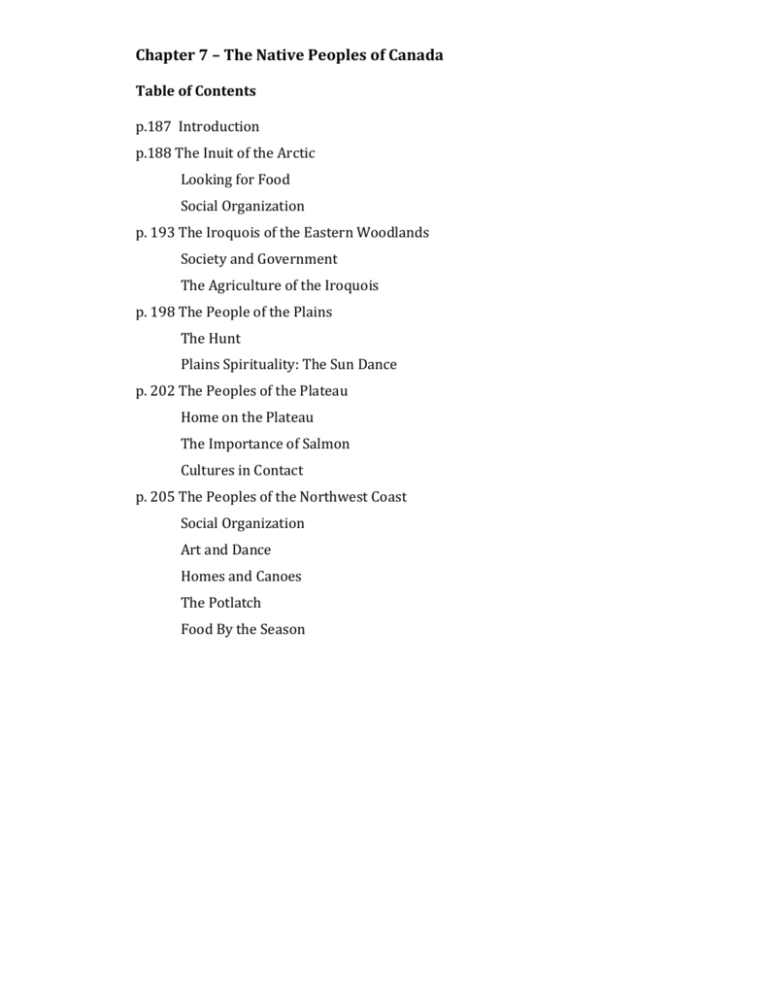
Chapter 7 – The Native Peoples of Canada Table of Contents p.187 Introduction p.188 The Inuit of the Arctic Looking for Food Social Organization p. 193 The Iroquois of the Eastern Woodlands Society and Government The Agriculture of the Iroquois p. 198 The People of the Plains The Hunt Plains Spirituality: The Sun Dance p. 202 The Peoples of the Plateau Home on the Plateau The Importance of Salmon Cultures in Contact p. 205 The Peoples of the Northwest Coast Social Organization Art and Dance Homes and Canoes The Potlatch Food By the Season Introduction to Native Peoples of Canada Chapter Mythology Myths are traditional stories that typically explain something about the universe - some sort of natural or social phenomenon. Myths usually involve supernatural beings or events Purpose of Native American Myths: To explain the workings of the natural World and their connection to it To support Native traditions and social customs To enlighten and guide people through life Natives created these myths to make sense of the world To attempt to explain the mystery of the Universe **Read Myth about the Squamish people and the Salmon What are some interesting themes of Native American Storytelling/Spirituality that you notice when reading this story? Involves supernatural beings and events The supernatural brothers – who turn themselves into a fish and a whale the Snookum (the sun that turns into an eagle) The Chief who “sends the salmon” every year * Myths are a large part of Native American Culture and Spirituality – we will learn more about this on Monday **Read the Introduction on pg. 186 Long before any Viking or Europeans came to Canada, North America was home to millions of Native peoples These Native Peoples represented many different culture groups and spoke hundreds of languages In this chapter we will learn about different Native groups from different Regions and how they thrived in those Regions given the resources and the conditions, which we studied in the last chapter. Anthropology definition: * The study of humankind and the interactions of human beings, as well as, their society and culture. This includes: * How they structure their lives * How they interact with one another * How they interact and deal with the World around them The 13 paragraph headings on pg. 186-187 are the categories that Anthropologists use to describe Societies/Cultures. This organized way of describing a society/culture is known as ethnography. Ethnography Definition: An organized way of describing a society/culture Complete the Vocabulary Words: 1. Subsistence 2. Hunting & Gathering 3. Domestication 4. Shamanism 5. Kinship 6. Matrilocal 7. Patrilocal 8. Patriarchal 9. Patrilinial 10. Bilateral

